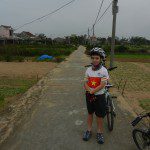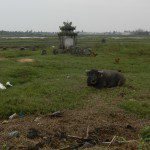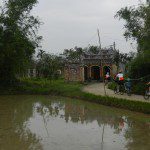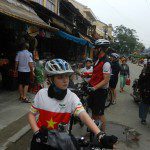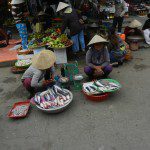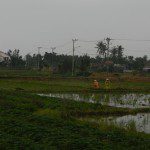Our first ride around Hoi An
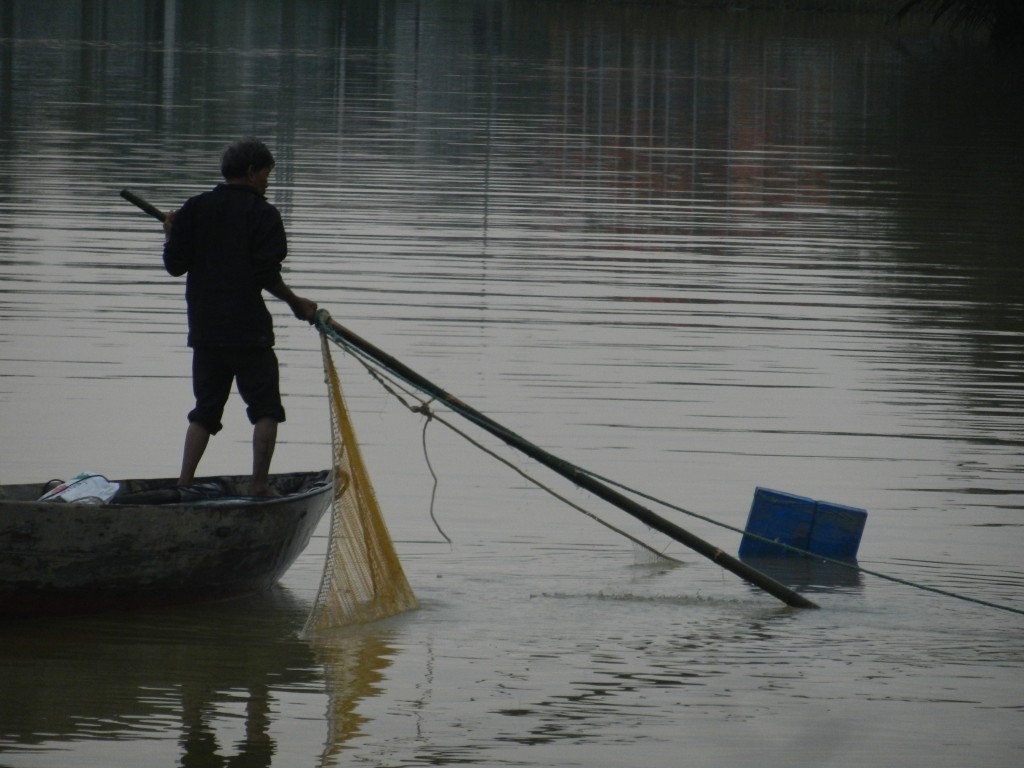
It is 5am. A blare of martial music rings out across the paddy fields from the nearby village. It is followed for the next two hours by alternating harangues and what sounds like slightly off-tune 40s dance music. This, we find out, is the public radio that starts the day. Seemingly within minutes there are black-clad old people in the fields with conical reed hats, wielding heavy-handled mattocks. They are joined, an hour or so later, by a younger generation in baseball caps: We can only assume the older people are still marching to the communist-era drum.
As far as we can tell the fields all around here are subsistence farms, or nearly so. The fields are worked by hand, knee-deep in mud, with, sometimes, help from a water buffalo. Many of them seem to be multi-purpose, combining growing rice with keeping ducks, chickens and the occasional buffalo.
On the river that separates our hotel from the fields, there are small skiffs being propelled along by long flexible paddles as they seek out fishes. Egrets swoop and swallows flit between river and field
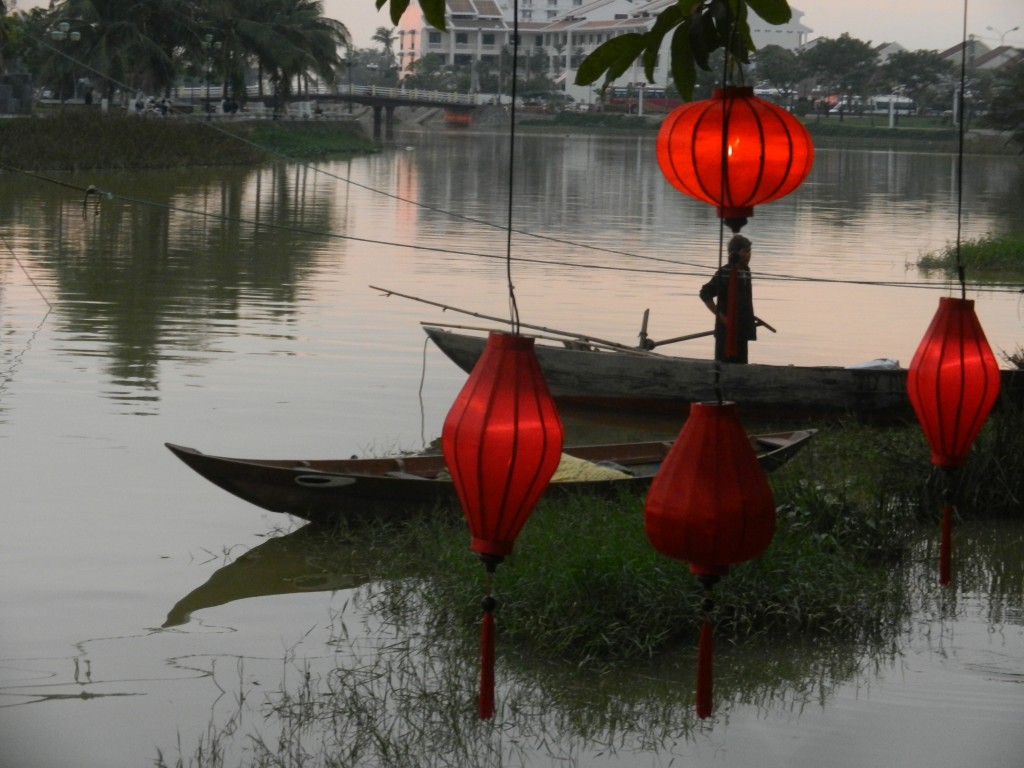
We rode 25 km through those fields this morning. It was almost a perfect ride. Because this area is subject to huge and annual flooding, it is crisscrossed with concrete footpaths that can’t get washed away. Those footpaths make idyllic bike paths through the fields and past people’ s small houses. The houses are simple and sparse; they all have two stories so that the furniture can be moved up a floor in the time of floods. The floors and gardens are all concrete or tiles which are easily cleaned of mud.
Our small group gets lots of friendly waves as we pass through the country. The thing that really attracts attention, though, is the tag-along being used to take our youngest member along. In a country where whole families can fit on one bike, the tag-along is the height of novelty and luxury.
Thanks to its French past, Vietnam does coffee well. We stopped at a roadside cafe and had a particularly Vietnamese version – iced coffee with condensed milk – while at the next table a group of locals played chequers with noisy enthusiasm.
Twenty-five kilometres didn’t seem to faze anyone, but it did sort of justify the enormous banquet we had for lunch after passing through the ‘vegetable village’ with it’s regimented plots of, well, vegetables. (And, by the way, am I the only person in the world who thought peanuts grow on trees? You learn something new very day.)
After the kids had a swim in the pool we headed by into Hoi An to take in the sights. Although Hoi An is pretty enough, it does feel a bit over-rated as a World Heritage site. The small houses are very run-down and the restaurants, cafés and tourist shops fail to achieve any sense of being quaint or picturesque.
It improves, though, as the Sun goes down and we launch candles on the river.



